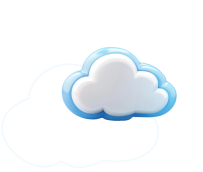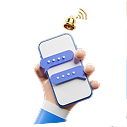 blog.by Nadine Mohamed
blog.by Nadine Mohamed
In the world of computing, software is broadly categorized into two main types: system software and application software. While both categories are indispensable for a computer system to function optimally and serve user needs, their roles are fundamentally different. System software functions as the backbone of a computer system. It interacts directly with the hardware, manages system resources, and creates a platform for application software to run. In contrast, application software is designed to perform specific tasks that users directly interact with, such as creating documents, editing images, or browsing the web.
Understanding the distinction between system software and application software is essential for a wide range of users, from casual computer users to IT professionals, system administrators, and software developers. The way these two types of software operate and interact influences system performance, usability, and security. This article offers a thorough comparison, examining their definitions, roles, examples, and the way they function together to create a cohesive digital environment.
What Is System Software?
System software refers to a class of computer programs that manage and support the hardware and basic functionalities of a computer. It is the foundational layer that facilitates the operation of hardware components and provides services required for the execution of application software. In essence, system software is the intermediary that ensures communication between the user, the application software, and the underlying hardware.
The primary purpose of system software is not to serve the user directly with visible functions but to run in the background and support the infrastructure of a computer. Without it, application software would not have the environment or the control mechanisms needed to perform tasks effectively.
Key Functions of System Software
System software performs several crucial functions that maintain the integrity, efficiency, and usability of a computer system. One of its primary roles is resource management, which involves allocating CPU time, managing memory, and controlling access to input and output devices like printers, scanners, and monitors. Through bootstrapping, the system software initiates the startup process of a computer, preparing the environment for higher-level software. It also ensures hardware interaction by using device drivers—small programs designed to help the operating system communicate with various hardware components.
Additionally, system software offers a platform for applications, ensuring a stable and predictable environment for application software to operate. It handles file management tasks such as storing, organizing, and retrieving files and directories, making it easier for users and applications to access data efficiently. Security features like user authentication, permissions, and access controls are also built into system software to safeguard data and restrict unauthorized access to system resources.
What Is Application Software?
Application software, often referred to simply as an "application" or "app," is software designed for end-users to perform specific tasks. Unlike system software, which maintains the functionality of the computer system as a whole, application software addresses the needs and goals of users directly. These can range from writing documents, managing spreadsheets, and editing photos to browsing the internet, playing games, and facilitating business operations.
Application software cannot operate independently; it relies entirely on the underlying system software for resources, device communication, and hardware management. It’s tailored to individual user needs and provides interfaces, usually graphical, that facilitate user interaction with the program's features and functions.
Key Functions of Application Software
Application software is built to help users accomplish specific objectives. One of its main features is handling user-specific tasks, such as writing a report, sending emails, or analyzing data. It is highly focused on problem-solving, offering tools and features that help users meet particular goals. Most applications come with a graphical user interface (GUI) that simplifies the interaction process through buttons, menus, and visual elements, making the software more accessible and user-friendly.
Application software also allows for data processing and manipulation, letting users create, edit, and manage different forms of digital content, including text, numbers, images, audio, and video. It serves a broad spectrum of sectors including education, entertainment, business, healthcare, and more.
Key Differences Between System Software and Application Software
System software and application software are both vital, yet they diverge significantly in purpose, function, and interaction with the user. System software primarily manages computer resources and provides an operational platform for applications. It runs independently and is essential for basic system operation. Application software, by contrast, is developed to carry out specific user-defined tasks and always depends on system software to function.
In terms of user interaction, system software works mostly in the background and does not typically involve direct interaction, whereas application software is user-facing and designed for engagement. System software is often pre-installed with the device, such as an operating system or firmware, whereas application software is usually installed by the user based on individual needs and preferences.
System software is typically written in low-level programming languages such as Assembly, C, or C++, which are closer to machine code and better suited for hardware manipulation. Application software is developed using high-level languages like Python, Java, or C#, which are more abstract and optimized for handling complex user interactions. Examples of system software include operating systems like Windows and Linux, BIOS, and device drivers. Application software examples include Microsoft Word, Adobe Photoshop, Google Chrome, and enterprise software like Salesforce.
Types and Examples of System Software
Operating Systems
Operating systems (OS) are the most fundamental type of system software. They manage all other software and hardware on a computer. Examples include Microsoft Windows, widely used in personal and business computers; macOS, the operating system for Apple’s Mac devices; and Linux, an open-source OS popular in server environments and by developers. Mobile operating systems like Android and iOS also fall into this category, providing platforms for running apps on smartphones and tablets.
Device Drivers
Device drivers are specialized programs that allow the operating system to communicate with hardware peripherals. Every hardware component, from printers and monitors to network cards and graphics cards, requires a corresponding driver to function properly. These drivers translate general instructions from the operating system into specific commands understood by the hardware.
Firmware
Firmware is embedded software stored in non-volatile memory chips inside hardware components. It is responsible for low-level control of hardware devices. The BIOS (Basic Input/Output System) in personal computers is a prime example of firmware, initializing hardware during the booting process and passing control to the OS.
Utility Software
Utility software is designed to analyze, configure, optimize, and maintain a computer. Examples include antivirus programs that protect the system from malware, disk defragmenters that improve hard drive efficiency, file compression tools that reduce file size, and backup software that ensures data preservation. These tools enhance system performance and provide critical maintenance functions.
Types and Examples of Application Software
Productivity Software
This category includes tools designed to improve efficiency and facilitate common business or academic tasks. Word processors like Microsoft Word and Google Docs allow users to create and edit documents. Spreadsheet programs such as Microsoft Excel and Google Sheets are used for data organization and analysis. Presentation software like Microsoft PowerPoint and Google Slides helps create visual aids for communication. Email clients such as Microsoft Outlook and web-based services like Gmail support digital correspondence.
Entertainment Software
Entertainment applications are used for leisure activities and include video games like Fortnite and Minecraft, which offer immersive virtual environments. Media players such as VLC and Windows Media Player allow users to play music and videos. Streaming service applications like Netflix and Spotify provide access to movies, shows, and music.
Graphics and Multimedia Software
Used for creative and design work, this type of software includes photo editing tools like Adobe Photoshop and GIMP, video editing programs like Adobe Premiere Pro and DaVinci Resolve, and audio editing software such as Audacity and Adobe Audition. These applications offer powerful tools for producing and refining multimedia content.
Web Browsers
Web browsers are a specific type of application software that allow users to access and navigate the internet. Examples include Google Chrome, Mozilla Firefox, Microsoft Edge, and Apple’s Safari. They act as gateways to the web and support multimedia, scripting, and secure communications.
Business and Enterprise Software
These applications cater to business processes and organizational management. Customer Relationship Management (CRM) tools like Salesforce help businesses manage client interactions and sales processes. Enterprise Resource Planning (ERP) systems such as SAP and Oracle E-Business Suite integrate various business functions including inventory, finance, and human resources. Accounting software like QuickBooks assists with financial record-keeping and tax preparation.
Educational Software
Designed to support learning and instruction, educational software includes language learning applications like Duolingo, simulation software such as flight simulators used in pilot training, and Learning Management Systems (LMS) like Moodle and Canvas, which organize and deliver course content in academic institutions.
Interactions and Dependencies
Application software depends on system software to function. The operating system is responsible for loading applications into memory, allocating CPU time, and managing I/O operations necessary for the application's functionality. For instance, when a user opens a photo editing app, the operating system ensures the app has access to necessary files, memory, and graphical processing resources.
System software, in turn, must interact with hardware through device drivers. These dependencies mean that the entire computing stack must work in harmony: hardware is managed by system software, which supports application software, which serves the user. Any malfunction in one layer can impact the entire computing experience.
The Importance of the Distinction
Understanding the difference between system software and application software is crucial for several reasons. In troubleshooting, identifying whether an issue stems from the hardware, system software, or an application helps in resolving problems more effectively. For system optimization, users can deploy utility software or adjust system settings to improve performance, while developers can create more efficient applications by understanding the constraints imposed by system software.
In terms of security, both system and application software require protection. System-level security measures include firewalls, encryption, and access controls, while application-level security involves user authentication and secure coding practices. In software development, understanding these layers enables better software design. Application developers can optimize their products for the OS, while system programmers focus on performance and hardware integration.
A Symbiotic Relationship
System software and application software work in tandem to deliver a seamless and productive computing experience. The system software lays the groundwork by managing computer resources, maintaining security, and providing a platform on which application software can operate. In contrast, application software brings the computer to life for the user, enabling the execution of countless personal, professional, and entertainment-related tasks.
Their roles, while distinct, are inherently interconnected. Without system software, there would be no operating environment for applications to function. Without applications, the system software would have little practical utility for users. This symbiotic relationship ensures that computers are not only operational but also useful and tailored to the diverse needs of their users. Understanding this distinction is key to mastering the fundamentals of computer science and appreciating the complexity behind the everyday use of digital technology.
Are you ready to get started and study abroad? Just browse through more than 110,000 diverse programs worldwide, Educatly offers a diverse array of educational opportunities tailored to your interests and career goals.
Signing up is easy! Simply create a profile and explore our extensive database to find the perfect program for you. Whether you're drawn to renowned universities in bustling cities or serene campuses in scenic locations, Educatly ensures you'll find a match that suits your aspirations.
To receive personalized guidance every step of the way, schedule a free consultation with one of our experienced educational advisors. They're dedicated to helping you navigate the application process, understand visa requirements, and secure scholarships or financial aid, ensuring you access top-tier educational opportunities with confidence.




 blog.feedback.yes
blog.feedback.yes blog.feedback.no
blog.feedback.no